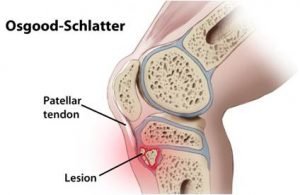
Growing Pains and Children’s Sports Injuries
Growing Pains and Children’s Sports Injuries

Winter sports are resuming and this means increased running loads for many children and adolescents. We are seeing many kids present to the clinic with overuse injuries of the lower limb – often categorized as growing pains.
So what should you do when your child starts complaining of knee pain, heel pain, hip pain? Should you let them keep playing? Should they rest? Ice? See a doctor? Maybe a physio?
Read About our Knee Pain Treatment
Let’s clear things up a little…
We are all susceptible to overload injuries when subjected to increases in load – growing children and adolescents are more vulnerable.
Growth Plates
A growth plate is an area of developing/immature tissue found at the ends of a child’s growing bones. Growth plates are active at various stages of a child’s growth allowing bones to expand in length. Most growth plates close and mature into normal bone between the ages of 16 to 19.
Due to their immaturity compared to surrounding bone and soft tissues, growth plates are vulnerable to injury from repetitive stress and strain. Many of the growth plates in the lower limb have powerful muscles attaching on or near them. The tension from these muscles can cause inflammation of the growth plate known as apophysitis.
Common Growing Pain Conditions:
Osgood Schlatter’s Disease
Apophysitis injury at the tibial growth plate just below the knee. The powerful quadriceps mucles of the thigh give way to the patella tendon, which attaches on this growth plate.
Sinding Larsen Johansson Syndrome
Very similar to Osgood’s however it occurs at the bottom of the patella.
Sever’s Disease
Another very common condition affecting the heel where the achilles tendon attaches.
The pain associated with these conditions is directly related to inflammation, which varies according to the level of loading. It is common for a child to have long periods of time without discomfort (often during Summer) only for the pain to return with increased running, jumping, kicking, etc (often during Winter).
So what should you do??
The good news is that these conditions are self-limiting. The growth plate will eventually mature and the child will no longer experience symptoms. As this can take a number of years, effective management is crucial during the period when the child is experiencing symptoms. From experience, I have often found concurrent inflammation of the attaching tendon and without correct management these can go on to cause long-term problems.
Physio Treatment for Growing Pains
You should consult with a sports physio immediately who will provide a clear and effective management plan. This will include:
- Techniques to offload the affected area – tape, heel lifts, etc
- Manual therapy to reduce pain
- Advice on load management and injury prevention
- Biomechanical assessment and correction
- A specific strengthening program
- Soft tissue management – note that stretching often exacerbates these conditions. Foam rolling and trigger pointing can be more effective.
- Instructions on the use of ice
In mild cases, physiotherapy management can be effective in eliminating pain. In more severe cases, we aim to reduce pain to a manageable level so that the child can continue participating in the sport they love.
Contact our Duncraig Physio clinic for more information or book an appointment now.